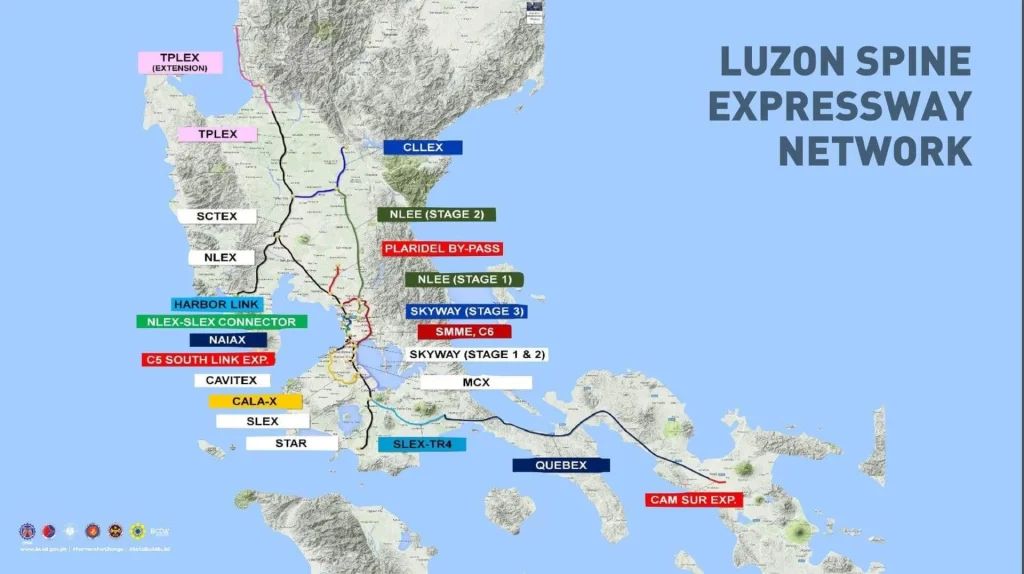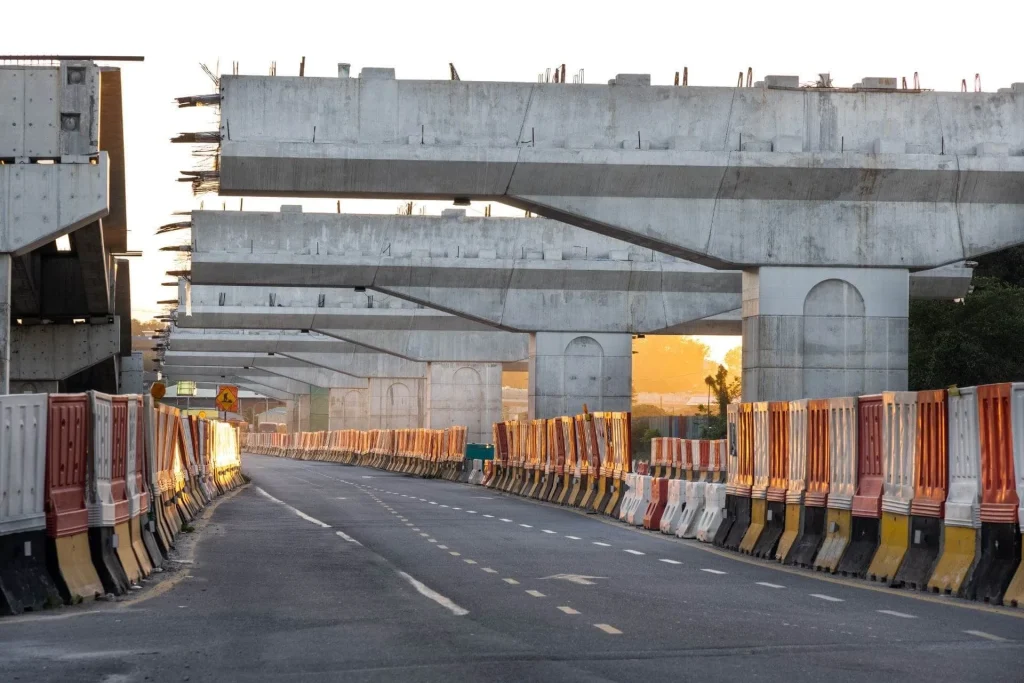Roadways are what connect your residential properties to urban centers and other properties. In the Philippines, there is a massive project called the Luzon Spine Expressway Network that strives to cut down the travel time between economic prospects in Luzon to much shorter times. This blog aims to give background information on what the LSEN is.
What is the Luzon Spine Expressway Network (LSEN)?
The Luzon Spine Expressway Network is the created plan that is meant to solve the popular problem of congested traffic in the country, specifically on the main island of Luzon. The Luzon Spine Expressway network spans 1,040 kilometers, along with 18 expressways. At full length, the Luzon Spine Expressway Network is around 655 kilometers.
The Luzon Spine Expressway Network will serve to connect to the 12 expressway networks that are present in Luzon at present. The development of this expressway network has a relation to the Build, Build, Build program from the previous administration, wherein the development of major infrastructure is implemented to boost the growth of the economy.
According to the recent State of the Nation Address, the goal of the current administration in terms of infrastructure development is to foster economic efficiency. Moreover, as of June 2023, it is reported that more than 500 bridges and 4,000 kilometers of roadways have been developed and improved.
In boosting the efficiency of transportation in the country alongside the development of the Spine Expressway Network (LSEN), more than 1,000 kilometers of railway projects, focused on the North-South Commuter Railway System, is currently under progress. This progress is meant to shorten the travel from Pampanga to Laguna to 2 hours only, benefitting residential properties in those areas.

Photo from morefunwithjuan.com
What Is the Purpose of the Luzon Spine Expressway Network?
The Spine Expressway Network (LSEN) is purposed to construct a more organized and efficient travel and transport route across the Luzon main island of the Philippines. Specifically, the LSEN is meant to cut down the travel time between North and South Luzon, Ilocos, and Bicol regions respectively.
In an attempt to strive towards the idea of linking the three main islands of the Philippines, Luzon, Visayas, and Mindanao, the President mentioned in the recent State of the Nation Address that apart from the aforementioned idea, “all prospective sites of economic development” must be linked in achieving the goal of boosting economic growth in the country.
Included in the LSEN project are the Panay-Guimaras-Negros Island Bridges, Bataan-Cavite Interlink Bridge, Tarlac-Pangasinan-La Union Expressway, Metro Manila Skyway Stage 3, NLEX Harbor Link Project, Plaridel By-Pass Road Phase II, NLEX-SLEX Connector Road, and the Samal Island-Davao City Connector Bridge. The aforementioned roadways are just some of the included examples in the massive LSEN project.
In addition, the construction of the LSEN project is meant to cut down the travel time between La Union and Metro Manila to approximately 3 hours instead of 6 hours. The LSEN project is also meant to cut down the travel time between the Ilocos and Bicol regions to 9 hours instead of 20 hours.
What Are the Benefits of Developing Major Roadways?
Roadways are integral to the infrastructure that makes up society. Different kinds of roadways include highways and expressways.
Highways are the roads that link two major urban centers, and they are the roads where goods are transported through. Some highways have tolls, while others do not. Highways also typically have 4 lanes to support faster road traffic.
Expressways are roads that are purposed to have smooth traffic flow. Expressways are meant to support high-speed traffic, which is why expressways can have up to 8 lanes.
In the roads that comprise the Luzon main island, the existing roadways have their limitations in terms of what regions in Luzon are linked together. Through the LSEN project, networks of highways and expressways will be linked together in order to provide professionals and the transport of goods and services to have less travel time when traveling between the regions of the Luzon main island.

How Could the Development of the Luzon Spine Expressway Network Impact the Country?
The LSEN is a massive project that is purposed to link major economic prospects in the Luzon main island in the country. Through its construction, major roadways and expressway networks will be linked, creating more efficient routes for professionals to travel through, as well as increasing the efficiency of goods and services being transported. This aim is meant to boost the Philippines economy in a positive direction.
Furthermore, the President stated in the recent State of the Nation Address that inter-modal connectivity will be one of the main considerations in developing the LSEN project. Inter-model transportation is the exchange of passengers between two different modes of transportation.
Hence, if the LSEN project is developed with the goal of benefiting inter-modal connectivity, there will be an increased efficiency between crucial economic markets across the Luzon main island. Examples of these economic markets are business districts and agricultural hubs. Residential properties in Luzon will also be benefitted due to having faster travel times.
By connecting major roadways and expressways networks in a way that strives to boost inter-modal connectivity, the shortened travel times between significant economic prospects in the Luzon main island will not only increase economic growth in the country. The LSEN project will also boost the rate of how fast economic growth occurs in the country.
Related Infrastructure Developments
Under the continual development of the LSEN project, three major projects under the LSEN have had a lot of progress, according to the Philippine News Agency. These three major projects are the Cavite-Laguna Expressway, Central Luzon Link Expressway Phase I, and the NLEX-SLEX Connector Road.
It is reported that the Cavite-Laguna Expressway is around 59% complete, with the Central Luzon Link Expressway Phase I being around 97% complete, and the NLEX-SLEX Connector Road being around 69% complete.
The Cavite-Laguna Expressway is stated to cut down travel time to 45 minutes, with the Central Luzon Link Expressway Phase I purposed to reduce travel time to 20 minutes, and the NLEX-SLEX Connector Road is meant to have a travel time of 20 minutes as well.
These reports are stated to foster economic efficiency in Laguna and Cavite. Moreover, the aforementioned progress reports are stated to reduce the travel time between the SLEX and CAVITEX to 45 minutes once the projects reach completion.
Read more: What Does the Continuation of the Build Build Build Program Mean for Your Real Estate Investments?


